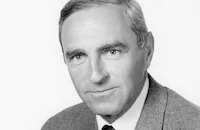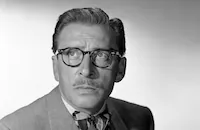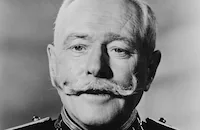Tora! Tora! Tora!

Brief Synopsis
Cast & Crew
Richard Fleischer
Martin Balsam
So Yamamura
Jason Robards Jr.
Joseph Cotten
Tatsuya Mihashi
Film Details
Technical Specs

Synopsis
After Japan signs the Axis Alliance with Germany in 1941, Adm. Isoroku Yamamoto, commander of the Japanese Navy, realizes that the center of United States Naval operations at Pearl Harbor must be destroyed if Japanese power is to spread in the Pacific. In Washington, Secretary of State Cordell Hull and Secretary of War Henry L. Stimson suggest the cooling of diplomatic relations with Japan after the treaty, but few in the U. S. military or diplomatic corps fear imminent attack. At Pearl Harbor, Gen. Walter C. Short, commander of U. S. ground forces, is more worried about sabotage than foreign attack and orders all planes to be placed in the middle of the runway; in addition, the radar system he has developed is rendered useless since its operators do not know how to interpret the readings. After Japan invades Indochina, Lieut. Col. Rufus S. Bratton of U. S. Army Intelligence convinces Stimson that a Japanese attack is impending, and Pearl Harbor is placed on full alert on November 30th; few preparations are actually made, however, and within a couple of days the base is back to its unprepared state. Just before the actual attack, Bratton learns from a decoded message that Japanese Adm. Chuichi Nagumo has received orders to sail for Hawaii with six aircraft carriers, but the intelligence officer is unable to locate Army Chief of Staff George C. Marshall, who is horseback riding, and President Roosevelt is warned only hours before the bombing is to begin. Japan instructs Ambassador Kichisaburo Nomura to present Hull with an ultimatum, which the Japanese expect to be refused, in order to make the attack seem retaliatory, but an inept typist in the Japanese Embassy delays the message so that its delivery coincides with the actual bombing. The Japanese attack results in the devastation of almost all Navy ships and planes based in the Pacific, but Yamamoto regards the holocaust with mixed emotions because of the anticipated American retaliation.

Director

Richard Fleischer
Cast

Martin Balsam

So Yamamura

Jason Robards Jr.

Joseph Cotten

Tatsuya Mihashi

E. G. Marshall
Takahiro Tamura

James Whitmore
Eijiro Tono

Wesley Addy
Shogo Shimada
Frank Aletter
Koreya Senda

Leon Ames
Junya Usami

Richard Anderson
Kazuo Kitamura

Keith Andes

Edward Andrews

Neville Brand

Leora Dana
Asao Uchida

George Macready
Norman Alden
Walter Brooke
Rick Cooper
Elven Havard
June Dayton

Jeff Donnell
Richard Erdman
Jerry Fogel
Shunichi Nakamura
Carl Reindel

Edmon Ryan
Hisao Toake
Susumu Fujita
Bontaro Miyake
Ichiro Reuzaki
Kazuko Ichikawa
Hank Jones
Karl Lukas
Ron Masak
Kan Nihonyanagi
Toshio Hosokawa
Crew
L. B. Abbott
Carl Biddiscombe
Layne Britton
Jack Canary
Inoue Chikaya
James Corcoran
Art Cruickshank
Richard Day
William Eckhardt
Richard Fleischer
A. D. Flowers
Larry Forrester
Kinji Fukasaku
Osami Furuya
Jerry Goldsmith
Stanley Goldsmith
David Hall
Courtney Halsam
Pembroke J. Herring
Shinsaku Himeda
Kuranoshuke Isoda
Taizo Kawashima
Ray Kellogg
Ryuzo Kikushima
Keinosuke Kubo
Otto Lang
Herman Lewis
Toshio Masuda
Arthur Morton
Yoshiro Muraki
Hiroshi Nagai
Masao Namikawa
James E. Newcom
Hideo Oguni
Norman Rockett
Tsuyoshi Saka
Masamichi Sato
Elliot Schick
Walter M. Scott
Jack Martin Smith
Ted Soderberg
Kameo Sonokawa
Murray Spivack
Cmdr. Usn E. P. Stafford Ret.
Dan Striepeke
Jack Stubbs
Shizuo Takada
Masayuki Takagi
Theodore Taylor
Duane Toler
Maurice Unger
Vision Photography Inc.
Shin Watarai
Cmdr. Usn George Watkins
Charles F. Wheeler
Lt. Col. Arthur P. Wildern Ret.
Douglas O. Williams
Elmo Williams
Elmo Williams
Ed Wynigear

Videos
Trailer
Hosted Intro





Film Details
Technical Specs

Award Wins
Best Special Effects
Award Nominations
Best Art Direction
Best Cinematography
Best Editing
Best Editing
Best Editing
Best Sound
Articles
Tora! Tora! Tora!
The research of Gordon W. Prange, at that time a military historian at the University of Maryland, bore a formative impact on the script. A former member of General MacArthur's staff in Tokyo, Prange interviewed numerous subjects, including Japanese military officers involved in the attack. He also obtained access to the original log books on both the American and Japanese sides, enabling him to reconstruct a minute-by-minute account of the Pearl Harbor attack. A translated version of Prange's resulting book was first published in Japan in 1966 under the title Tora Tora Tora. Referring to the Japanese code name for the operation, the phrase literally means "Tiger Tiger Tiger." A few years later, Reader's Digest published a condensed version of the book under that same title. (Only in 1981 did a longer edition of the book appear in English, under the title of At Dawn We Slept: The Untold Story of Pearl Harbor.) The American and Japanese military also reviewed the script closely for accuracy, and the studio even hired Minoru Genda, the officer in charge of planning under Vice Admiral Churichi Nagumo, as a consultant. News of Genda's presence resulted in protests by the Survivors of Pearl Harbor Association and chapters of Veterans of Foreign Wars.
The first director hired on for the project was actually Akira Kurosawa, whose agreement to film the Japanese sequences was instrumental in securing the necessary financial backing. Richard Zanuck also named Richard Fleischer early on to direct the American sequences and to serve as the director for the film as a whole. At first Kurosawa and his co-writer Hideo Oguni produced a script over 400 pages long, which the studio estimated at four hours of screen time. Concerned about the length, Fleischer and Williams met with Kurosawa in Honolulu and convinced him to cut a number of scenes. The studio was also troubled by Kurosawa's decision to cast amateurs--wealthy Japanese industrialists--in leading roles. When Kurosawa began shooting in December 1967, his behavior on the set only compounded the studio's worries. In his audio commentary on the DVD, Fleischer recalled that on the first day of shooting Kurosawa demanded to repaint a Shinto shrine on the battleship set multiple times because he didn't like the shade of white used. He also insisted on replacing the books in the library with books from the right period, even though they were barely visible. As a result of these and other delays, after two weeks the studio replaced him and announced publicly that he was stepping down due to "fatigue." Ultimately, none of Kurosawa's footage remained in the finished picture.
In his place, Fox hired two younger Japanese directors; Kinji Fukasaku handled the action sequences and Toshio Masuda handled the dialogue sequences. Fukasaku is best known for the violent and controversial Battle Royale (2000) and the Yakuza series Battles Without Honor and Humanity (1972-1974). Before working on Tora! Tora! Tora!, he had directed Black Lizard (1969) and Black Rose Mansion (1969), both starring the popular female impersonator Akihiro Miwa. Toshio Masuda was Nikkatsu's leading director of crime thrillers in the 1960s. He is still little known in the West compared to contemporaries such as Seijun Suzuki, though Velvet Hustler (1967) did eventually receive VHS distribution and Rusty Knife (1958) has since appeared on DVD in Criterion's "Nikkatsu Noir" Eclipse box set. Fleischer recalled that initially, Fukasaku and Masuda didn't provide sufficient coverage of scenes for editing. Accustomed to working with limited amounts of film stock, they tended to film in short fragments rather than shooting master shoots of entire scenes and then shooting additional close-ups and inserts. Thus the first few days' worth of footage left Fleischer and Williams with very little latitude in the cutting room.
If the task of editing together footage shot by separate Japanese and American production units proved inherently difficult, it was hardly the only logistical challenge that the producers faced. An article published in the Los Angeles Times during the time of production stated that the film employed "what is believed to be the largest contract player roster in film history." This included a total 224 actors: 137 Americans and 87 Japanese. At great effort and expense, the studio also tracked down and refurbished a number of World War II fighter planes, mainly Boeing B-17 "Flying Fortresses" and Curtis P-40 Warhawks. For the Japanese A6M "Zero" fighters, the technical crew had to repaint American T-6 Texan planes and equip them with new fiberglass nose cones, since none of the original Japanese fighter planes remained after Japan's armistice agreement. Although no pilots died during shooting, one was killed before shooting began and another died in a crash during practice exercises for the film.
Shooting on Tora! Tora! Tora! finished under schedule in May 1969, but Fleischer and Williams experienced significant delays in post-production due to the extensive miniature and special effects work required. For this production Fox wanted to try out its own front projection system, which other studios were starting to use at the time; the best-known example of this was MGM's 2001: A Space Odyssey (1968). Fleischer later stated that he was happy with the final results, though the front projection system was very time-consuming compared to the rear projection method that was more commonly used at the time.
While the film earned 14.5 million dollars in rentals during its initial release, this ordinarily respectable sum hardly offset a negative cost of approximately 22 million dollars, making it the most expensive Hollywood film of the era after Cleopatra (1963) and Hello, Dolly! (1969). The underperformance of Tora! Tora! Tora! only compounded the difficulties Fox was facing after the high-profile flops of Doctor Dolittle (1967) and Star! (1968). The studio executive Richard Zanuck resigned under pressure in December 1970 due to the studio's ongoing financial woes. Since then, the film has found a new life on home video and stands out as one of the most impressive reconstructions of a battle on film.
Producer: Elmo Williams
Associate Producers for Japanese sequences: Otto Lang, Masayuki Takagi, Keinosuke Kubo
Directors: Richard Fleischer (American sequences), Toshio Masuda and Kinji Fukasaku (Japanese sequences)
Script: Larry Forrester (American sequences), Hideo Oguni and Ryuzo Kikushima (Japanese sequences), based on the books Tora! Tora! Tora! by Gordon W. Prange and The Broken Seal by Ladislas Farago
Director of Photography: Charles F. Wheeler
Photography for Japanese sequences: Shinsaku Himeda, Masamichi Satoh and Osami Furuya
Art Directors: Jack Martin Smith, Richard Day, Yoshiro Muraki and Taizo Kawashima
Film Editors: James E. Newcom, Pembroke J. Herring and Inoue Chikaya
Music: Jerry Goldsmith
Special Photography Effects: L. B. Abbott and Art Cruickshank
Technical Advisors for Japanese sequences: Kameo Sonokawa, Kuranoshuke Isoda; Shizuo Takada and Tsuyoshi Saka
Air Operators: Lieutenant Colonel Arthur P. Wildern (Retired), Commander USN George Watkins, Jack Canary
Cast: Martin Balsam (Adm. Husband E. Kimmel), So Yamamura (Adm. Isoroku Yamamoto), Jason Robards, Jr. (Gen. Walter C. Short), Joseph Cotten (Henry L. Stimson), Tatsuya Mihashi (Comdr. Minoru Genda), E. G. Marshall (Lieut. Col. Rufus S. Bratton), Takahiro Tamura (Lieutenant Commander Fuchida), James Whitmore (Adm. William F. Halsey), Eijiro Tono (Adm. Chuichi Nagumo), Wesley Addy (Lieut. Comdr. Alwin D. Kramer), Shogo Shimada (Ambassador Kichisaburo Nomura), Frank Aletter (Lieutenant Commander Thomas), Koreya Senda (Prince Fumimaro Konoye), Leon Ames (Frank Knox), Junya Usami (Adm. Zengo Yoshida), Richard Anderson (Capt. John Earle), Kazuo Kitamura (Foreign Minister Yosuke Matsuoka), Keith Andes (Gen. George C. Marshall), Edward Andrews (Adm. Harold R. Stark), Neville Brand (Lieutenant Kaminsky), Leora Dana (Mrs. Kramer), Asao Uchida (Gen. Hideki Tojo).
C-143m. Letterboxed.
by James Steffen
Sources:
Tora! Tora! Tora! 2-disc Special Edition DVD. 20th Century Fox Home Entertainment, 2006.
"Fatigue Halts Film Director." Los Angeles Times, December 27, 1968, p.F8.
Dallos, Robert E. "Young Zanuck Out in Studio Shakeup" Los Angeles Times, December 30, 1970, p.A1.
Diehl, Digby. "'Tora! Tora! Tora!' Shows Both Sides of Pearl Harbor, 1941." Los Angeles Times, April 20, 1969, p.W20.
Fradkin, Philip. "'Mistake' Told in Japanese Attack on Pearl Harbor." Los Angeles Times, September 2, 1968, p.3.
Thomas, Kevin. "Dec. 7, 1941: It Happens Again in 'Tora! Tora! Tora!'" Los Angeles Times, August 25, 1968, p.C1.

Tora! Tora! Tora!
Keith Andes (1920-2005)
Born John Charles Andes on July 12, 1920, in Ocean City, New Jersey, Keith been began performing in his teens for school productions and for local radio stations in his hometown. After he graduated with a B.A. in education from Temple University in 1943, he pursued a stage career in earnest, and in 1947 scored a triumph in the Broadway musical The Chocolate Soldier, where he won a Theatre World Award for his performance. That same year, he made his film debut as one of Loretta Young's brothers in The Farmer's Daughter (1947). Although his film career never quite took off, one could certainly envy him for playing opposite two of the hottest blonde bombshells of their generation: first with Marilyn Monroe Clash by Night (1952); and then Jayne Mansfield in The Girl Most Likely (1957).
If Andes lacked the star power to be a consistent Hollywood lead, he certainly had no problems with television. Here, his stalwart presence and commanding baritone made him more than servicable for television through three decades: (Goodyear Theatre, Playhouse 90, The Ford Television Theatre); '60s: (Perry Mason, The Rifleman, Star Trek, The Outer Limits, Glynis); and '70s (Cannon, The Streets of San Francisco).
Andes made his last notable screen appearance in the Al Pacino vehicle And Justice For All (1979), before falling into semi-retirement and doing occassional voice work. He is survived by two sons, Mark, Matt; and three grandchildren.
by Michael T. Toole
Keith Andes (1920-2005)
Quotes
I fear all we have done is to awaken a sleeping giant and fill him with a terrible resolve.- Admiral Isoroku Yamamoto
Well, you can tell Lt. Dickinson from me, he couldn't hit a bull in the butt with a bass fiddle.- Admiral William F. Halsey
Wildlife Preservation Society!- Lt General Walter C Short
Sir, this is Private Elliot at Opana Point. There's a large formation of planes coming in from the north - 140 miles, 3 degrees east.- Pvt. Elliot
Yeah? Well... Don't worry about it.- Lt. Tyler
Trivia
The Japanese section of the film was originally to be directed by Akira Kurosawa.
Actor Jason Robards was actually present at the bombing of Pearl Harbor on the 7th of December, 1941.
When Japanese characters in the film refer to the date of the attack, they are actually saying "December 8," which is technically correct, as Japan is a day ahead of the U.S.; however, it is translated as "December 7" in the subtitles to avoid confusing U.S. audiences.
The U.S. Navy's Office of Information was inundated with complaints from U.S. citizens when the military agreed to allow active U.S. servicepersons to participate in the recreation of the attack on Pearl Harbor, which some viewed as glorifying Japanese aggression and showing Americans as unprepared.
The P-40 crashing in the flight line was an unplanned accident - it was a life-sized mockup powered by a gasoline engine turning the propeller and steered by using the wheel brakes, just like real airplanes, but was specifically designed not to fly. The aircraft shown was loaded with explosives which were to be detonated by radio control at a specific point down the runway. Stunt actors were strategically located and rehearsed in which way to run. However shortly after the plane began taxiing down the runway it did begin to lift off the ground and turn to the left. The left turn would have taken it into a group of other mockups which had also been wired with explosives, but weren't scheduled to be destroyed until later. The explosives in the first P-40 were detonated on the spot in order to keep it from destroying the other planes, so the explosion occurred in a location the stunt men weren't prepared for. When it looks like they were running for their lives, they really were. This special effect was filmed with multiple camera so that it could be reused in other shots in the film, as were all the major special effects.
Notes
Location scenes filmed in Hawaii. Subtitles are used in the Japanese sequences.

Miscellaneous Notes
Released in United States on Video May 25, 1989
Released in United States September 1970
Released in United States Winter January 1, 1970
Akira Kurosawa replaced as director of Japanese sequences by Toshio Madusa and Kinji Fukasaku in early stages of shooting.
Released in United States Winter January 1, 1970
Released in United States on Video May 25, 1989
Released in United States September 1970














